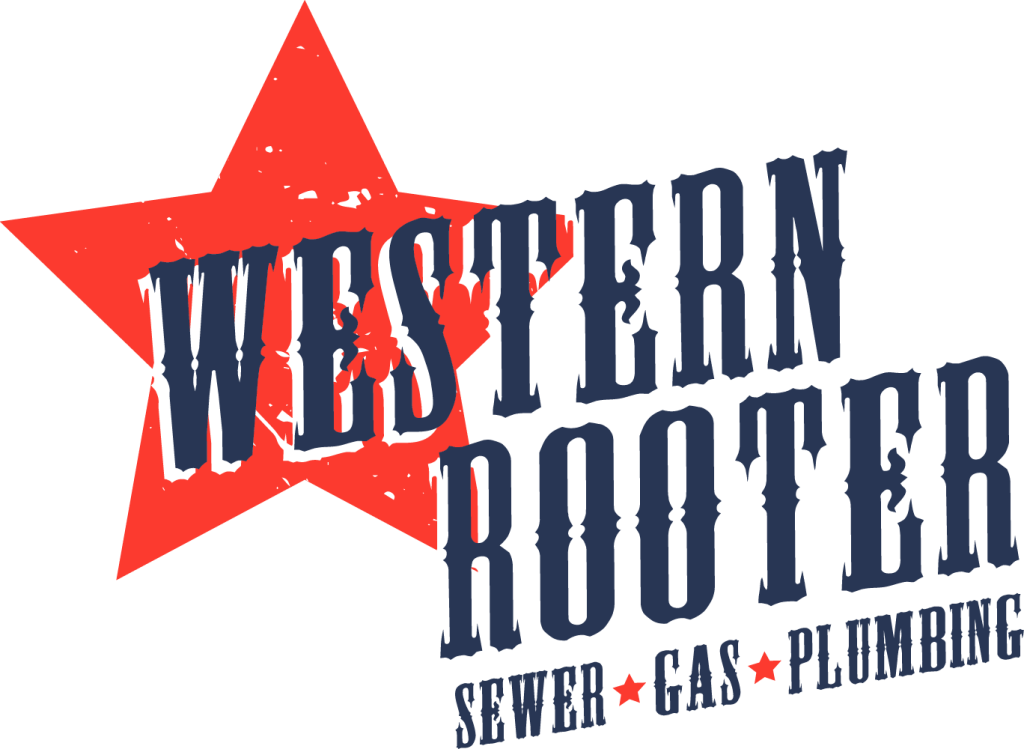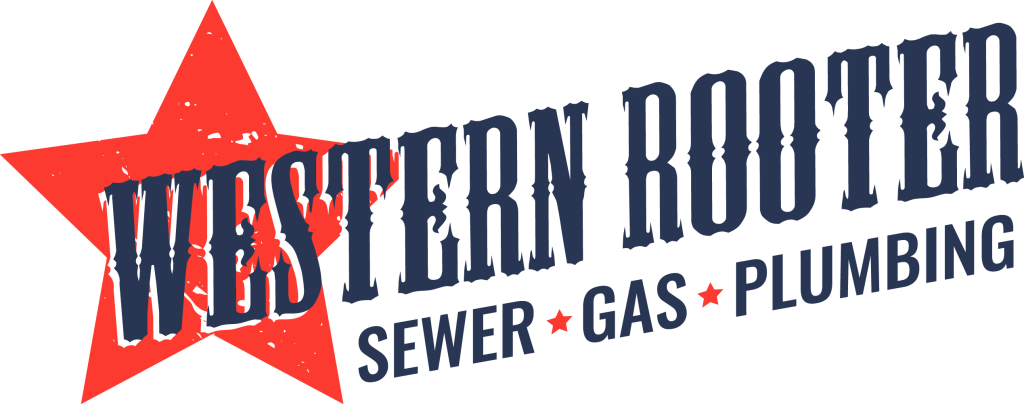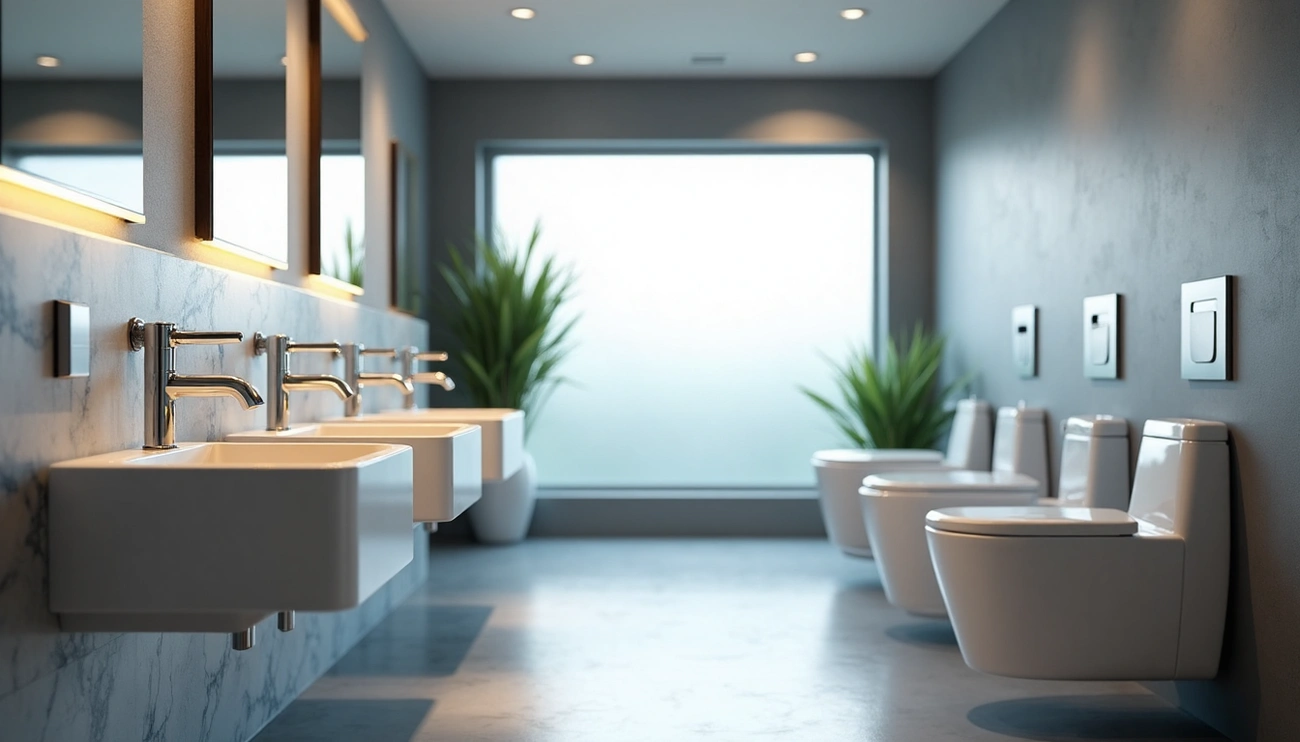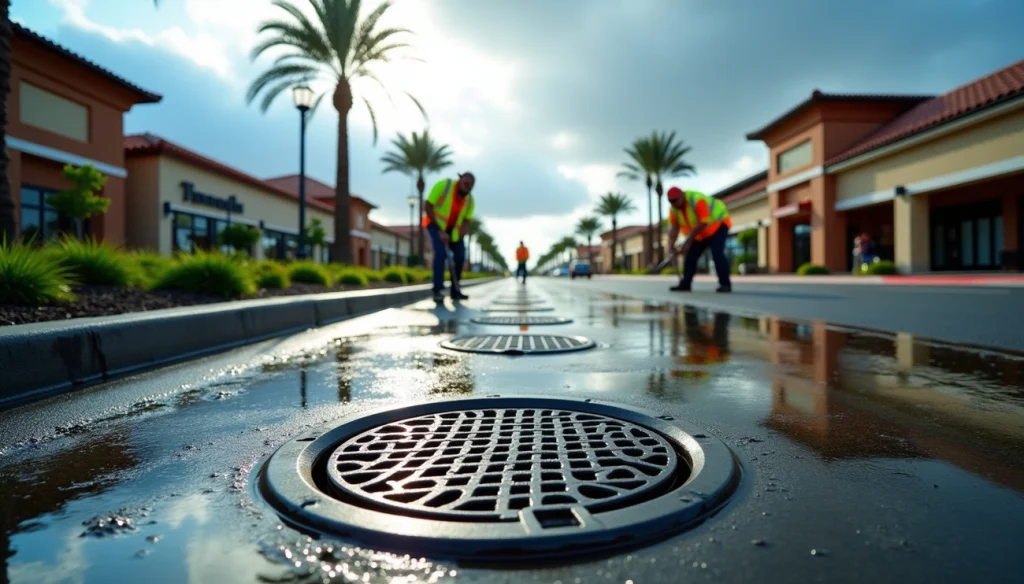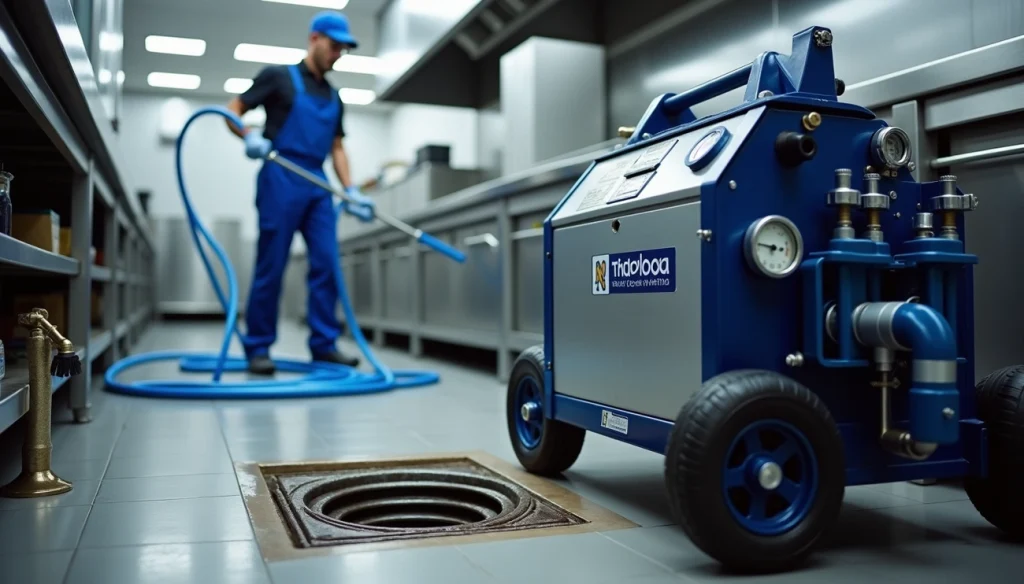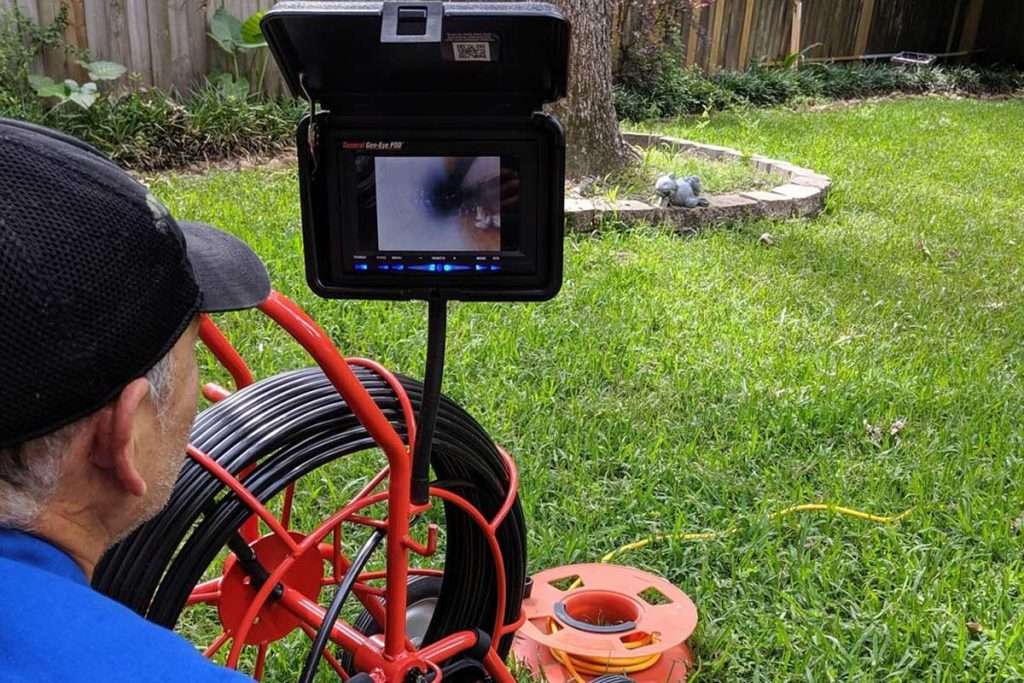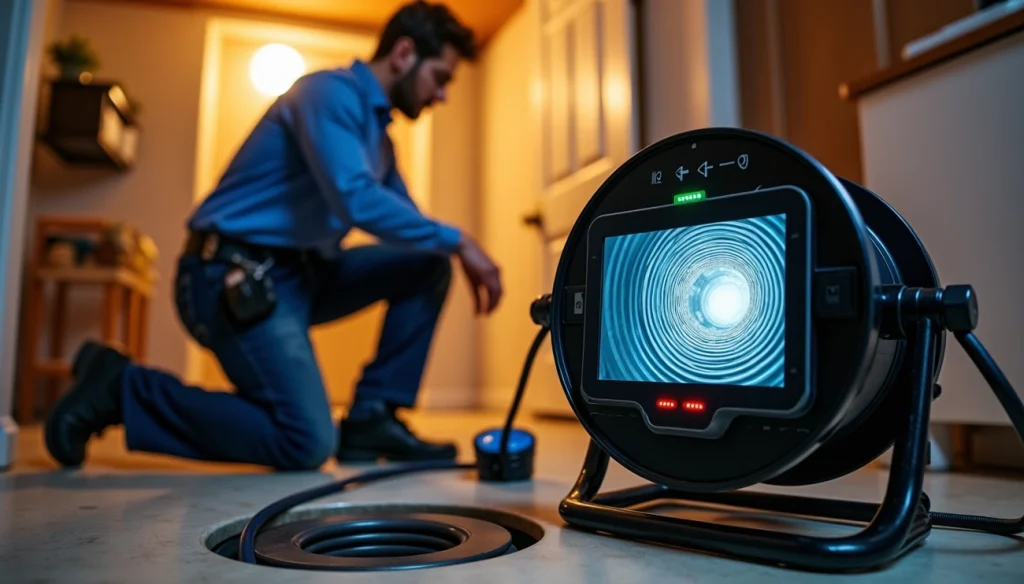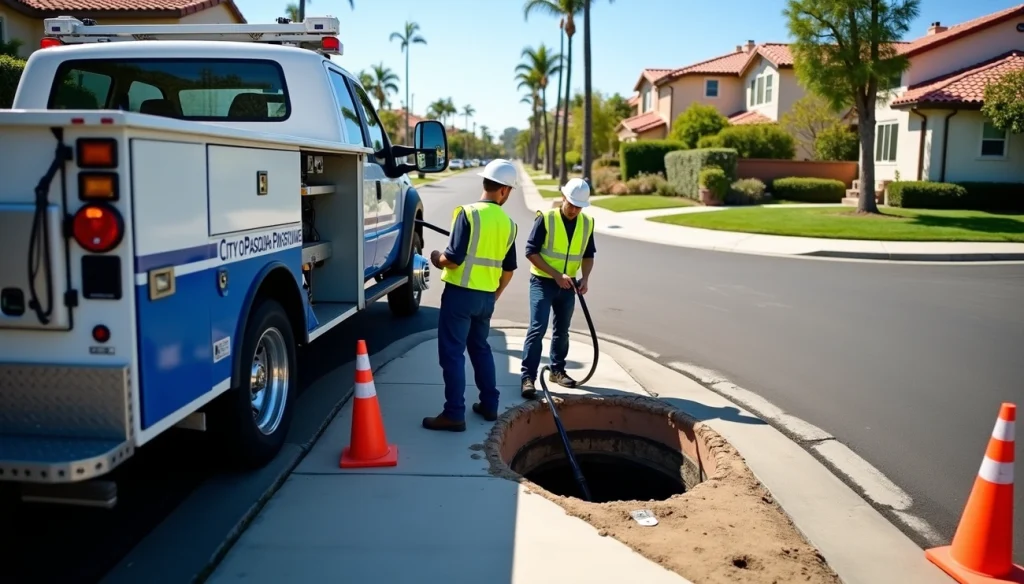Commercial bathroom remodel projects don’t have to break the bank or disrupt your business operations. However, without proper planning, these renovations can quickly deplete your budget while delivering less-than-impressive results.
Fortunately, the right commercial restroom plumbing upgrades can dramatically cut long-term operating costs while enhancing user experience. In fact, strategically chosen fixtures and systems can reduce water usage by up to 30% in most commercial settings. By implementing efficient plumbing for businesses, you’ll not only see immediate savings on utility bills but also decrease maintenance requirements and extend the lifespan of your facilities.
From ADA compliant bathroom fixtures that serve all customers while reducing liability risks to commercial bathroom water saving technologies that pay for themselves within months, these 15 cost-cutting ideas will help you transform your commercial restrooms into efficient, modern spaces without emptying your accounts. Whether you’re planning a complete overhaul or targeted improvements, these smart strategies offer the best return on your investment in 2025.
Install Low-Flow Toilets
Image Source: Home and Garden – HowStuffWorks
Low-flow toilets represent one of the most effective ways to reduce water consumption during a commercial bathroom remodel. These modern fixtures have evolved significantly from their early counterparts and now offer excellent performance alongside substantial savings.
What low-flow toilets are
Low-flow toilets, often called high-efficiency toilets (HETs), use significantly less water than traditional models. Modern commercial low-flow toilets use no more than 1.28 gallons per flush (gpf), compared to older models that consumed between 3.5-7 gallons [1]. Two primary types exist: single-flush models that use a consistent water volume and dual-flush options offering different volumes for liquid (0.8-1.1 gpf) and solid waste (1.3-1.6 gpf) [2].
How low-flow toilets cut costs
The financial benefits of installing low-flow toilets are substantial. According to EPA estimates, replacing old, inefficient flushometer-valve toilets with WaterSense labeled models in a 10-story office building with 1,000 occupants could save nearly 1.2 million gallons of water and approximately $10,000 annually [1]. Furthermore, these toilets can prevent 20-60% of water from being flushed down the drain [1]. Since restrooms account for up to 40% of commercial water bills [1], this upgrade delivers rapid return on investment.
Tips for installing low-flow toilets
When installing low-flow toilets during commercial restroom plumbing upgrades:
- Ensure minimum water pressure requirements (25-40 psi for pressure-assisted models) [3]
- Match flushometer valves and bowls with identical gpf ratings [4]
- Consider WaterSense certified models for maximum efficiency [1]
- Check for available rebates and incentives to reduce upfront costs [1]
Upgrade to Sensor Faucets
Image Source: Stern Engineering Ltd
Touchless technology stands at the forefront of smart commercial bathroom remodel investments that deliver immediate returns through reduced water consumption. Sensor faucets represent an increasingly essential upgrade for businesses seeking to modernize their facilities while cutting operational expenses.
What sensor faucets are
Sensor faucets utilize infrared technology to detect hand movement, automatically controlling water flow without requiring physical contact. These touchless fixtures operate through sensors that activate when hands pass in front of them and immediately shut off when hands are removed. Modern sensor faucets often include features like temperature controls, metering capabilities that regulate water dispensed per use, and even smart device connectivity for remote management.
Cost-saving benefits of sensor faucets
The financial advantages of sensor faucets are substantial. Studies indicate they can reduce water usage by up to 30% in commercial settings [5]. Research by Fontana Showers demonstrated water reduction of 50-70% in public restrooms equipped with sensor faucets [5]. Additionally, the EPA’s WaterSense program estimates savings of approximately 700 gallons annually per fixture [2]. Beyond water conservation, these fixtures enhance hygiene by eliminating touchpoints, consequently reducing maintenance needs and extending the lifespan of bathroom components.
Installation tips for sensor faucets
Installing sensor faucets generally costs about 30% more than traditional fixtures [2], yet delivers rapid return on investment. Key installation steps include turning off water supply, disconnecting existing lines, mounting the faucet, connecting the control box underneath the sink, and adding inline filters to protect sensors. Essentially, proper installation requires ensuring adequate power supply—either through batteries, hardwiring, or innovative options like ECOPOWER technology that generates electricity from water flow itself.
Use Automatic Flush Systems
Image Source: Splash Plumbing
Automatic flush systems have emerged as an essential component in effective commercial bathroom remodel projects, offering both hygiene improvements and substantial cost reductions over time.
What automatic flush systems are
Automatic flush systems utilize sensor technology to detect when users have finished using the toilet or urinal, then flush without requiring any physical contact. These touch-free, sensor-activated mechanisms eliminate cross-contamination risks through advanced infrared technology that detects body heat or movement. Many modern systems offer dual-flush capabilities—using less water for liquid waste and more for solid waste [3].
Why they reduce maintenance costs
Beyond hygiene benefits, automatic flush systems yield meaningful financial advantages. First, they minimize wear and tear by eliminating physical handles that often face rough treatment or vandalism [6]. Moreover, these systems ensure consistent flushing after every use, preventing odor buildup and maintaining cleaner facilities overall [7]. With battery life lasting approximately three years or 60,000 flushes [7], maintenance requirements decrease dramatically alongside reduced water consumption through timed delays between flushes [8].
How to implement auto flush systems
Implementing automatic flush valves primarily follows two approaches:
- Retrofit solutions that automate existing manual systems without requiring water shutoff—installation typically takes just minutes [7]
- Complete replacement systems with side-mount or direct sensor options
For optimal results, select systems with smart sensor technology that distinguishes between actual users and passersby, preventing phantom flushes that waste water [9].
Switch to Tankless Water Heaters
Image Source: Major Energy
Replacing traditional tank water heaters with tankless models offers substantial operational savings for commercial restrooms while delivering reliable hot water on demand.
What tankless water heaters are
Tankless water heaters, unlike conventional storage models, heat water only when needed through powerful burners or electric coils. These on-demand systems activate via flow sensors when taps are turned on, immediately heating water as it passes through heat exchangers [1]. Without the bulky storage tank, these compact units can be wall-mounted, saving valuable space in commercial bathrooms [10]. Many commercial tankless models offer flow rates between 2-5 gallons per minute [11] and can be linked together for higher capacity needs [12].
Energy and cost savings from tankless systems
The efficiency advantages of tankless systems are particularly noteworthy. According to the EPA, these units use up to 34% less energy in facilities consuming under 41 gallons daily [1], resulting in annual savings of approximately $95-100 for gas-powered models [1][1]. For businesses with higher hot water demands (around 86 gallons daily), energy efficiency still improves by up to 14% [1]. Furthermore, tankless systems typically last 20-25 years—twice the lifespan of conventional tanks [1][13]—substantially reducing replacement costs throughout a building’s lifecycle.
Installation considerations for tankless heaters
Despite upfront costs between $1,000-3,000 [1][4], several factors merit consideration. Gas-powered units often require dedicated gas lines and proper ventilation [10], whereas electric models might necessitate electrical system upgrades [10]. Professional installation remains essential, yet the compact design allows strategic placement near points of use, maximizing efficiency [10]. For commercial applications, multiple smaller units often provide redundancy and better performance than a single large system [12].
Add Leak Detection Sensors
Image Source: The New York Times
Leak detection technology represents a critical investment for commercial bathroom renovations that protects your entire facility from catastrophic water damage. Even minor water leaks can quickly escalate into major problems if left undetected.
What leak detection systems do
Modern leak detection systems utilize sophisticated technologies including acoustic sensors, infrared thermography, and moisture detection to identify water leaks before visible damage occurs [14]. These systems monitor water pressure, flow rates, and temperature changes, sending real-time alerts if they detect any anomalies [15]. Initially designed for residential use, commercial-grade systems now offer comprehensive protection through strategically placed sensors that immediately identify unwanted moisture.
How they prevent costly water damage
Early detection through leak sensors delivers substantial financial benefits. Mold can form within 24-48 hours of minor water damage, with remediation for a 1,500 sq. ft. space costing upwards of $10,000 before renovations even begin [5]. Beyond direct savings, these systems often qualify businesses for insurance premium discounts [5]. Furthermore, accurate leak identification reduces unnecessary excavation or demolition while preventing structural damages that could otherwise force business closures or relocations [14].
Best practices for installing leak sensors
For effective implementation throughout commercial bathrooms:
- Place sensors near toilets, sinks and under-sink areas where plumbing components like rubber washers wear quickly [5]
- Install detection cables above ceiling tiles for early warning of overhead leaks [16]
- Consider vandal-resistant units specifically designed for public restrooms with “wash-down mode” for cleaning [17]
- Ensure proper access for maintenance through inspection hatches in appropriate locations [18]
Install Pressure-Reducing Valves
Image Source: Reliant Plumbing
Controlling water pressure forms a critical foundation for any successful commercial bathroom remodel. Pressure-reducing valves (PRVs) serve as vital safeguards that protect your entire plumbing investment while delivering substantial long-term savings.
What pressure-reducing valves are
PRVs are mechanical devices that reduce incoming water pressure from municipal supply lines to safer, predetermined levels—typically between 40-60 pounds per square inch (PSI) [19]. These valves regulate water flow regardless of changing input pressure or varying flow rates [20]. Installed where the main water line enters the building, PRVs maintain consistent downstream pressure through internal diaphragms and springs that automatically adjust to fluctuations.
How they extend plumbing lifespan
Excessive water pressure (above 80 PSI) creates unnecessary strain throughout commercial restroom plumbing systems [21]. By maintaining optimal pressure levels, PRVs prevent hairline cracks and leaks that eventually lead to catastrophic pipe failures [21]. Furthermore, regulated pressure extends the operational life of fixtures, faucets, and water-using appliances by eliminating damaging pressure surges [19]. Many building owners report water consumption reductions of 10-20% after PRV installation, translating to thousands of gallons saved annually [21].
Installation tips for PRVs
For successful PRV implementation:
- Install immediately after the main shutoff valve where water enters the building [22]
- Include pressure gages on both sides to monitor performance [23]
- Adjust output pressure using the valve’s control screw after installation [23]
- Schedule annual inspections to ensure continued functionality [19]
Incorporate Greywater Recycling
Image Source: Anytime Plumbing Santa Cruz
Greywater recycling systems offer a holistic approach to commercial bathroom water conservation by reusing lightly used water that would otherwise go down the drain.
What greywater systems are
Greywater refers to gently used water from bathroom sinks, showers, and washing machines that, unlike blackwater from toilets, contains fewer contaminants [24]. Commercial greywater systems collect this water through dedicated piping networks completely separate from blackwater [24]. These systems typically process water through multiple stages: collection, pre-filtration to remove debris, advanced treatment (often using membrane bioreactors or biological processes), storage in designated tanks, and finally distribution for reuse [25].
Water reuse and cost benefits
The financial advantages of greywater recycling are substantial. These systems can reduce commercial building water consumption by up to 45%, depending on usage patterns [26]. For apartment complexes, this translates to savings of over 1.34 million liters annually [26]. Meanwhile, commercial buildings like the San Francisco Public Utilities Commission headquarters consume 60% less water than similar-sized structures through onsite water recycling [25]. In addition, buildings with water prices over $6.00/m³ can achieve remarkably short payback periods [2].
How to set up greywater recycling
Setting up greywater recycling works best in:
- New construction projects where separate piping systems can be incorporated from the start [2]
- Renovation projects where plumbing systems are already being modified [2]
For optimal implementation, install the system inside the building for accessibility and maintenance [2]. Subsequently, connect it to non-potable applications such as toilet flushing, landscape irrigation, cooling tower makeup, and even laundry facilities [27]. In essence, comprehensive planning during design phases yields the most cost-effective installations.
Use Durable PEX or Copper Piping
Image Source: J.O. Mory Inc.
Selecting the right piping materials forms the backbone of any successful commercial bathroom remodel project. Two options increasingly dominate the market: PEX and copper piping.
What PEX and copper piping are
PEX (cross-linked polyethylene) is a flexible plastic tubing that can compress and expand without bursting. It’s resistant to corrosion, freezing, and mineral buildup [28]. Copper piping, alternatively, offers superior durability, chlorine resistance, and maintains a professional appearance [29]. While copper has been standard for decades, PEX has gained popularity due to its affordability and installation advantages.
Why they reduce long-term repair costs
PEX tubing costs approximately one-third the price of copper, notably reducing initial material expenses [28]. Both materials substantially extend plumbing system lifespans—PEX offers a predicted 50-year life expectancy [28], whereas copper systems typically last 20-50 years under proper water conditions [29]. Primarily, these durable materials prevent costly emergency repairs that plague older galvanized pipes [30].
How to upgrade your piping
For commercial bathroom upgrades, consider these implementation strategies:
- Match piping material to specific water conditions—copper performs better with properly chlorinated water, while PEX excels in pH-regulated well water [29]
- Use continuous PEX runs to minimize potential leak points at joints
- Consider using copper for exposed areas where professional appearance matters
- For budget-conscious projects, implement PEX to maximize cost savings without sacrificing performance
Add Smart Water Monitoring Systems
Image Source: MDPI
Data-driven water management represents the future of commercial bathroom efficiency. Smart monitoring systems transform how businesses track and control their water consumption while preventing costly damage.
What smart water monitors do
Smart water monitoring systems employ IoT-enabled sensors to collect and analyze water usage data minute by minute. These systems create a comprehensive view of water consumption through five core stages: monitoring, data transmission, interpretation, manipulation, and presentation [31]. Advanced monitors track flow rates, detect pressure changes, and identify usage patterns unique to each fixture [32]. First, the system gathers information through strategically placed sensors; afterward, it transmits this data via cellular, radio, or WiFi networks to cloud platforms [33].
Real-time savings and alerts
The financial impact of smart monitoring is substantial:
- Reduces water consumption by 15-30%, yielding thousands in annual savings [33]
- Identifies leaks that typically account for 10-20% of a building’s water use [33]
- Prevents water damage claims that represent over 50% of all commercial real estate insurance claims [7]
These systems send instant notifications through mobile apps, texts, or emails when detecting abnormal usage [32]. Correspondingly, some advanced options can automatically shut off water supply when serious leaks occur [7].
How to integrate smart monitoring
For successful implementation, consider systems that integrate with existing billing infrastructure [34]. The setup typically involves installing sensors at key points throughout your plumbing system, particularly at main supply lines and near fixtures. Most solutions offer dashboard interfaces that display usage trends, leak alerts, and conservation opportunities [7]. Although upfront costs may seem high, the investment typically pays for itself within 2-5 years [33].
Install Energy-Efficient Hand Dryers
Image Source: CE Center – BNP Media
Modern hand-drying technology has transformed the economics of commercial bathroom operations, creating substantial cost savings while enhancing the user experience.
What energy-efficient dryers are
Energy-efficient hand dryers utilize advanced motor technology and streamlined design to dry hands rapidly with minimal electricity consumption. These units include heat-free options like the XLERATOReco that consumes just 1.7 Wh per use [35] and high-speed models that complete drying in 8-10 seconds [35]. In contrast to conventional dryers consuming 0.03 kWh per use [36], modern units like the Dyson Airblade 9kJ operate on as little as 3.0g CO2 per dry [37].
Savings on paper and electricity
The financial advantages are remarkable. Paper towels typically cost businesses around $1,460 annually [9], whereas energy-efficient hand dryers run for just $19-40 per year [9][37]. Even standard electric dryers cost approximately $14.58 monthly to operate [36]. Calculations demonstrate that switching from paper towels to efficient dryers yields annual savings of $658-703 [38]. Likewise, ROI typically occurs within 7-11.5 months [39][36].
Choosing the right model
For optimal selection, evaluate these factors:
- Traffic volume (busier facilities benefit from faster drying speeds)
- Energy certification (look for ENERGY STAR or LEED certified models)
- Initial investment vs. long-term savings (higher-end models often deliver greater efficiency)
- Features like HEPA filtration or vandal-resistant construction
Above all, consider models with adjustable settings to balance performance with energy use, ultimately maximizing both user satisfaction and operational savings during your commercial bathroom remodel.
Upgrade Lighting to LED Fixtures
Image Source: Alcon Lighting
LED lighting stands as a cornerstone of energy efficiency in any commercial bathroom remodel, offering substantial long-term savings while improving visibility and esthetic appeal.
What LED lighting offers
Light Emitting Diodes (LEDs) represent a fundamental shift from traditional lighting technologies. Unlike incandescent or fluorescent fixtures, LEDs convert almost all consumed energy into visible light rather than heat [40]. These semiconductor devices provide exceptional longevity, lasting between 15,000-50,000 hours—up to 25 times longer than traditional incandescent bulbs [3]. Simultaneously, modern LED fixtures offer moisture resistance and adjustable brightness, making them ideal for bathroom environments [40].
Energy savings in restrooms
Commercial restrooms must meet specific energy standards, with many jurisdictions limiting lighting power allowance to 0.60 watts per square foot [41]. LED implementation reduces energy consumption by up to 80% compared to traditional lighting [40]. Indeed, the average household saves approximately $225 annually by switching to LED lighting [3], with commercial settings realizing even greater savings due to higher usage. Furthermore, their reduced heat output minimizes the need for additional cooling [40].
Installation tips for LED lights
For successful LED integration:
- Select fixtures rated for damp or wet environments with IP65 weatherproof ratings [6]
- Choose appropriate brightness levels (80-500+ lumens per foot depending on purpose) [6]
- Look for high Color Rendering Index (90+) for mirror lighting [6]
- Consider models with ENERGY STAR certification for maximum efficiency [3]
Use Touchless Soap Dispensers
Image Source: Stern Engineering Ltd
Touchless soap dispensers represent a critical hygiene investment in your commercial bathroom remodel that simultaneously cuts operational costs. These modern fixtures deliver benefits far beyond their relatively modest price point.
What touchless dispensers are
Automatic soap dispensers utilize electronic sensors that detect hand movement beneath the unit, dispensing soap without physical contact [42]. Available in wall-mounted and counter-mounted versions, these devices come in various finishes and styles to complement upscale bathrooms and commercial environments [42]. Most models operate via infrared proximity sensors and can be powered through batteries, AC adapters, or even rechargeable options [43].
Hygiene and refill cost benefits
Primarily, touchless dispensers minimize cross-contamination risks by eliminating a common touchpoint in high-traffic restrooms [44]. Furthermore, these systems dramatically reduce soap consumption through precise dispensing. Foam soap dispensers, in particular, require significantly less product per use compared to traditional bulk options [45]. The controlled dispensing typically results in 10-15% less soap usage [46], therefore reducing monthly operational costs for businesses. Automatic units also streamline maintenance as cartridge systems take just six seconds to replace versus 30 seconds for refilling bulk dispensers [8].
How to install them
Installation varies by model type. For wall-mounted units, thoroughly clean mounting surfaces, mark precise hole locations, and ensure proper height for accessibility [47]. Counter-mounted models require appropriately sized holes matching dispenser specifications [47]. Most importantly, always position soap tanks below dispenser level—never above—to maintain proper operation [43].
Improve Ventilation Systems
Image Source: House Cleaning Services Seattle
Proper ventilation stands as a fundamental element in any commercial bathroom remodel, directly impacting both air quality and structural integrity. Effective air circulation systems prevent costly damage while creating healthier environments for users.
What improved ventilation includes
Commercial bathroom ventilation primarily involves exhaust fans that remove moisture-laden air directly to the outside [48]. These systems must match bathroom size, with experts recommending minimum airflow rates of 1 cubic foot per minute (CFM) per square foot [49]. Beyond basic extraction, modern ventilation options include continuous low-speed fans with humidity sensors and inline fans strategically positioned above shower areas [12].
How it reduces mold and maintenance
Adequate ventilation prevents moisture-related problems that plague commercial restrooms. Even minor humidity issues can trigger mold growth within 24-48 hours [50], potentially causing structural damage and compromised indoor air quality [49]. Proper exhaust systems remove steam, eliminate odors, and extract fumes from cleaning products—thus extending the lifespan of bathroom fixtures, paint, and structural elements [51].
Tips for upgrading ventilation
For optimal ventilation performance:
- Install fans that vent directly outside through roof or gable walls, never into attics [48]
- Minimize duct length and reduce bends to maximize airflow efficiency [12]
- Consider wall-mounted options for shortest exterior path when applicable [12]
- Select units with built-in timers or humidity sensors for automatic operation [48]
Add Water Filtration Systems
Image Source: The Spruce Eats
Water filtration systems represent an essential addition to any commercial bathroom renovation, serving as the first line of defense against contaminants that damage plumbing infrastructure and reduce fixture performance.
What commercial filtration systems do
Commercial water filtration systems remove impurities such as sediment, chlorine, minerals, and chemicals from incoming water supply. These systems utilize various technologies including activated carbon filters for removing chlorine and chemicals, reverse osmosis for eliminating dissolved solids, UV purification for neutralizing bacteria, and ion exchange systems for treating hard water [52]. Point-of-entry systems treat all water entering the facility, primarily protecting equipment throughout the building [53].
Improved water quality and fixture longevity
Properly filtered water directly impacts fixture durability by preventing scale buildup from minerals that corrode equipment [54]. Unfiltered water containing scale-forming ions damages pipelines, valves, and machinery, leading to reduced equipment performance [54]. Filtration systems extend the operational life of faucets, toilets, and water heaters by eliminating these harmful minerals [1]. For instance, businesses implementing filtration systems report fewer maintenance issues with front and back-of-house equipment [54].
Installation tips
For optimal installation results, consider implementing pre-filters to reduce load on main filtration units [13]. Position systems in stable environments away from extreme temperatures to maintain efficiency [13]. Replace filters on schedule—typically every 6-12 months depending on usage [1]. Install pressure gages to monitor system performance, as pressure drops often indicate filter saturation [55]. Lastly, schedule regular professional inspections to identify potential issues before they affect water quality [1].
Schedule Regular Line Flushing
Image Source: Canyon State Air Conditioning, Heating & Plumbing
Regular maintenance of plumbing lines serves as a foundational practice in any commercial bathroom remodel project, often delivering substantial long-term savings through simple preventive care.
What line flushing is
Line flushing involves pushing water at high pressure through your plumbing system to remove accumulated sediments and contaminants [56]. This straightforward process clears out mineral deposits, rust, and debris that naturally build up inside pipes over time. Through this cleaning action, the entire plumbing framework maintains its efficiency and structural integrity.
How it prevents costly clogs
Primarily, regular flushing prevents expensive emergencies by clearing potential blockages before they develop into major problems. The cost of professional line flushing is minimal compared to addressing burst pipes or complete septic system failures [57]. Furthermore, regular maintenance prevents the formation of biofilm—a collection of microorganisms that develops when disinfectants in stagnant water deplete [58]. This biofilm, along with sediment buildup, can compromise water quality and damage fixtures throughout your facility.
When and how to schedule flushing
For most commercial facilities, schedule line flushing every six months to one year [57]. Nonetheless, businesses in the food service or hospitality industry should consider quarterly flushing to avoid service disruptions [57]. Following long shutdowns, flushing becomes especially crucial as it removes potentially harmful microorganisms and prevents metal contamination from deteriorated protective scaling [59].
Conclusion
Remodeling commercial bathrooms with efficiency in mind delivers significant long-term savings while enhancing user experience. These 15 smart bathroom upgrades work together as a comprehensive strategy to reduce water consumption, minimize maintenance requirements, and extend the lifespan of your facilities. Most importantly, many of these improvements pay for themselves within months through reduced utility bills and operational costs.
Water-saving fixtures like low-flow toilets, sensor faucets, and automatic flush systems can reduce water usage by up to 30%, translating to thousands of dollars saved annually. Similarly, energy-efficient upgrades such as LED lighting, tankless water heaters, and modern hand dryers drastically cut electricity costs while providing better performance than their traditional counterparts.
Preventative measures also play a crucial role in cost reduction. Leak detection sensors, pressure-reducing valves, and smart water monitoring systems help identify potential problems before they escalate into expensive emergencies. Additionally, durable materials like PEX or copper piping combined with regular maintenance routines such as line flushing ensure your plumbing infrastructure remains functional for decades.
The ideal commercial bathroom remodel balances upfront investment with long-term returns. Though some technologies require higher initial outlays, their operational savings and extended lifespans ultimately deliver exceptional value. Whether you implement all 15 ideas or start with a few high-impact changes, your business will benefit from reduced operating costs, enhanced sustainability, and improved customer experiences for years to come.
